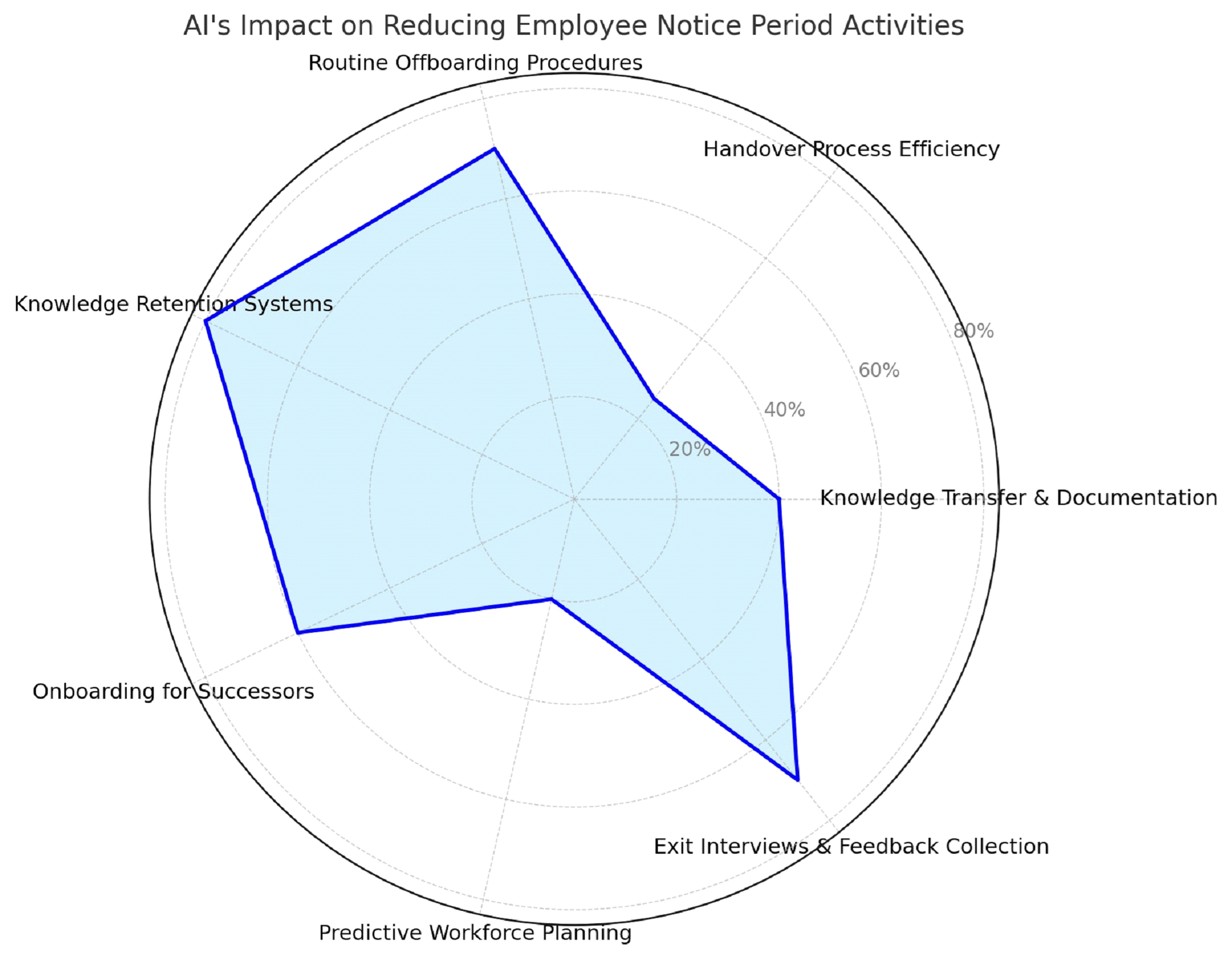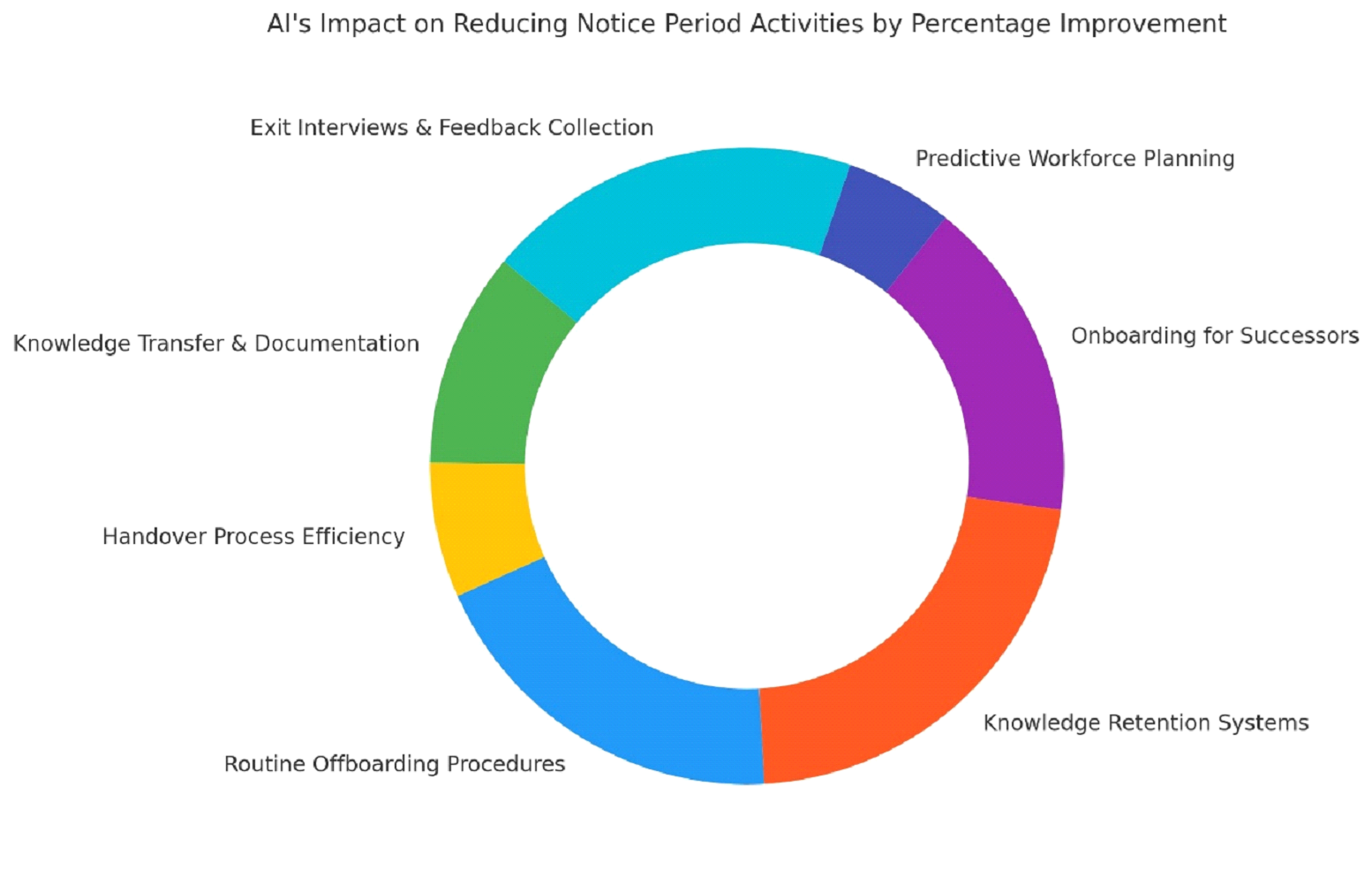AI technologies are transforming employee offboarding and knowledge transfer processes, allowing companies to reduce notice periods and ensure smooth transitions. In industries where retaining knowledge and ensuring quick handovers are essential, AI-driven tools offer solutions that streamline these processes. Here are some statistics and research-backed insights on how AI can effectively shorten employee notice periods.
Table Of Contents
1. Healthcare: Precision and Efficiency in Patient Care
- IDC reports that knowledge workers spend about 30% of their time searching for information.AI-powered documentation tools can cut this time significantly, making knowledge transfer faster and more efficient during notice periods.
- Companies using AI for knowledge management report up to a 40% reduction in onboarding and knowledge transfer times (McKinsey Global Institute). By automating the gathering of an employee’s documents, emails, and project information, AI saves departing employees time spent organizing essential insights.
Reference:McKinsey Global Institute. “The Future of Work: How AI is Reshaping Knowledge Management.” 2022.

2. Efficient Handover Process
- Gartner predicts that by 2024, 75% of large organizations will use AI tools for process automation, which can simplify handover by automating task assignments and prioritizing workload distribution.
- Companies utilizing AI for skill-matching report a 25% reduction in handover time as AI can quickly identify team members with relevant skills for smooth task allocation (PwC).
Reference:Gartner. “Forecast Analysis: AI in Workforce Automation.” 2023; PwC. “AI in Human Resource Management.” 2022.
3. Automating Routine Offboarding Procedures
- Deloitte found that Robotic Process Automation (RPA) can cut exit process times by up to 70% by automating routine offboarding tasks like account deactivation and access revocation, reducing dependency on outgoing employees for administrative steps.
- Forbes reports that 60% of HR departments plan to adopt RPA for offboarding within the next two years, indicating a growing reliance on AI for smoother exit processes.
Reference:Deloitte. “The Impact of RPA on HR Operations.” 2022; Forbes. “How AI is Revolutionizing Employee Offboarding.” 2023.
4. AI-Driven Knowledge Retention Systems
- According to Accenture, companies using AI for knowledge retention report an 80% improvement in retaining key information post-departure. AI categorizes and prioritizes information, allowing remaining team members to quickly access essential insights and reducing the need for prolonged handovers.
- Accenture also found that AI-enabled knowledge bases can reduce onboarding and training times by up to 40%,helping successors transition smoothly.
Reference: Accenture. “AI in Knowledge Management: Enhancing Retention and Access.” 2022.
5. Enhanced Onboarding for Successors
- Research from the Society for Human Resource Management (SHRM) reveals that structured onboarding reduces time-to-productivity by 50%.AI-driven onboarding tools that offer tailored training plans further reduce this time, with personalized AI onboarding programs helping new hires adapt 60% faster (SHRM).
- Systems like Workday and Oracle HCM use AI to customize onboarding content, decreasing reliance on departing employees to train replacements.
Reference:SHRM. “The Impact of AI on Onboarding Efficiency.” 2022.
6. Predictive Workforce Planning
- Harvard Business Review states that predictive workforce planning can cut employee turnover by up to 20%. AI forecasts potential departures by analyzing work patterns and satisfaction data, enabling HR to plan succession and knowledge transfer early and reducing the need for long notice periods.
- By identifying possible exits before they happen, HR can ensure backup plans are ready, streamlining transitions and minimizing disruptions.
Reference:Harvard Business Review. “AI and Predictive Workforce Planning: A Competitive Advantage.” 2023.

7. Streamlined Exit Interviews and Feedback Collection
- IBM’s research shows that AI-powered exit interviews can reduce feedback analysis time by 70%. Sentiment analysis identifies common themes and areas for improvement quickly, allowing HR to act on feedback sooner.
- With a faster feedback process, companies can implement strategies to improve retention, reducing turnover and thus the need for extended notice periods.
Reference:IBM. “AI in Employee Feedback and Exit Interviews.” 2023.
Visualization: AI’s Impact on Reducing Notice Periods
To showcase AI’s role in reducing notice periods, here’s a chart highlighting the impact of AI on various notice period activities.
Conclusion
AI holds tremendous potential for reducing employee notice periods by streamlining knowledge transfer, automating offboarding tasks, and predicting workforce changes. As more organizations adopt AI-driven solutions, seamless transitions may become the norm, reducing the need for extended notice periods. Investing in AI enables companies to maintain continuity, minimize disruptions, and quickly adapt to workforce demands.
References:
- McKinsey Global Institute. “The Future of Work: How AI is Reshaping Knowledge Management.” 2022.
- Gartner. “Forecast Analysis: AI in Workforce Automation.” 2023.
- PwC”AI in Human Resource Management.” 2022.
- Deloitte. “The Impact of RPA on HR Operations.” 2022.
- Accenture. “AI in Knowledge Management: Enhancing Retention and Access.” 2022.
- Society for Human Resource Management (SHRM). “The Impact of AI on Onboarding Efficiency.” 2022.
- Harvard Business Review. “AI and Predictive Workforce Planning: A Competitive Advantage.” 2023.
- IBM. “AI in Employee Feedback and Exit Interviews.” 2023.
These references underscore AI’s capacity to revolutionize notice periods, enabling more efficient workforce transitions in today’s fast-paced business world.
